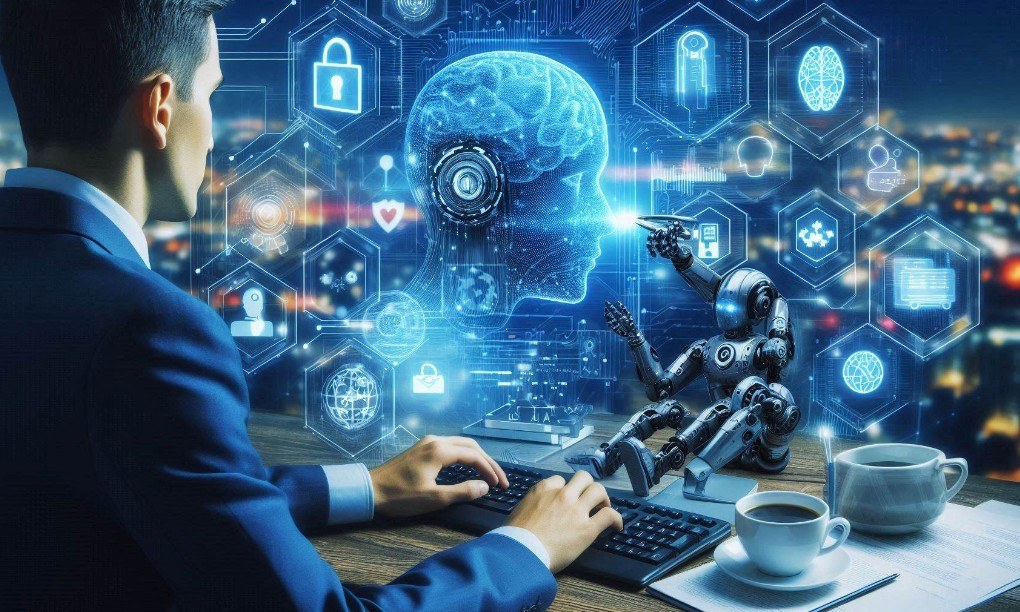In recent years, there has been a significant advancement in the field of Artificial Intelligence (AI) and Augmented Reality (AR). These technologies have become increasingly popular and have the potential to enhance virtual experiences in various fields such as gaming, education, healthcare, and...
AI and Cybersecurity How Smart Software Prevents Threats to Your Business

The rise of technology has drastically changed how organizations secure their data and operations. With increasing digital complexity, new challenges emerge daily. Protecting critical information requires innovative methods to anticipate, identify, and neutralize dangers before they cause harm. Solutions that adapt to evolving risks are crucial in maintaining safety in an ever-connected world.
Artificial intelligence has proven to be a transformative force in this domain. By analyzing patterns and making real-time decisions, it can outpace traditional methods in spotting vulnerabilities and responding to incidents. This ability to learn from experience allows these systems to become more effective over time, offering a level of vigilance that remains consistent even as threats evolve.
As a result, AI-driven tools have become indispensable for organizations looking to defend against ever-growing challenges. These advanced technologies provide proactive security measures, enabling faster detection and response to potential dangers, ensuring that sensitive data remains secure in an increasingly unpredictable environment.
Understanding AI's Role in Cyber Defense
The digital age has led to an explosion of online activities, making the protection of valuable data more complex than ever. Traditional methods of safeguarding sensitive information are no longer enough to keep up with the rapidly changing tactics of malicious actors. Artificial intelligence is stepping in to fill this gap, offering solutions that are both fast and adaptive. With its ability to analyze large volumes of data, AI can identify unusual patterns, detect potential dangers, and respond to incidents faster than humans.
Proactive Measures through Machine Learning
Machine learning, a subset of artificial intelligence, enables systems to learn from data and improve their responses without human intervention. By processing historical data, these systems can identify potential risks and predict where future vulnerabilities may appear. This proactive approach allows for quicker reaction times, stopping potential breaches before they escalate.
Real-Time Detection and Automated Response
AI-driven tools excel at monitoring networks in real-time, constantly scanning for irregularities or abnormal behaviors. Once an anomaly is detected, automated systems can take immediate action, such as isolating affected areas, blocking suspicious activities, or alerting security teams. This quick response minimizes damage and prevents breaches from spreading further.
How AI Detects and Responds to Threats
In today's digital landscape, the ability to detect and neutralize dangers in real time is critical. Artificial intelligence has revolutionized the way security systems handle potential risks by automating the identification and response processes. By leveraging vast amounts of data and advanced algorithms, AI systems can analyze activities and patterns at a scale far beyond human capabilities. This allows for quicker, more accurate assessments of potential risks.
- Pattern Recognition: AI constantly scans for patterns in network activity. It compares current data with historical information to spot unusual behavior that might indicate a security breach.
- Anomaly Detection: When AI systems identify behavior that deviates from the norm, such as an unusual login attempt or data transfer, they flag it as a potential threat.
- Predictive Analytics: By analyzing past incidents, AI can predict where future vulnerabilities might emerge, enabling preemptive action before issues arise.
Once a potential danger is detected, the next step is swift intervention. Automated responses ensure that actions are taken almost instantly to limit damage. These actions might include blocking access, alerting security personnel, or isolating compromised systems.
- Immediate Action: AI systems can automatically block malicious IP addresses or restrict access to sensitive information as soon as a threat is identified.
- Isolation of Affected Systems: If a breach is detected in one part of the network, AI can isolate that segment to prevent the issue from spreading.
- Continuous Monitoring: Even after an attack is neutralized, AI continues to monitor systems to ensure no further threats emerge.
Advancements in Machine Learning for Security
Recent innovations in machine learning have drastically enhanced security measures across various industries. By enabling systems to learn from data and improve over time, these advancements are revolutionizing how potential vulnerabilities are identified and managed. The ability to analyze large datasets with precision has allowed for faster and more efficient detection of irregularities, providing an extra layer of defense in protecting sensitive information.

Improved Detection Capabilities
Machine learning algorithms have evolved to detect complex patterns and recognize even the most subtle signs of a breach. These systems no longer rely solely on predefined rules but instead adapt based on experience, allowing them to identify emerging threats that were previously undetectable.
- Adaptive Learning: As machine learning models analyze new data, they continuously refine their detection strategies, improving accuracy and reducing false positives over time.
- Behavioral Analytics: By understanding typical behavior patterns, machine learning can identify deviations that suggest suspicious activities, even if they don't match known attack signatures.
- Real-Time Updates: These systems can instantly adapt to new threats and vulnerabilities as they are discovered, offering a dynamic defense mechanism.
Faster Response Times
Machine learning's ability to process information quickly means that responses to potential breaches can be automated and immediate. This fast reaction minimizes the window of opportunity for an attacker and ensures that damage is limited.
- Automated Incident Handling: Once a potential risk is detected, machine learning systems can take predefined actions, such as isolating affected systems or blocking harmful traffic, without human intervention.
- Efficient Resource Allocation: Machine learning models can prioritize incidents based on their severity, ensuring that the most critical issues are addressed first.
- Continuous Monitoring: These systems operate 24/7, ensuring that security measures are always active and ready to respond at any moment.
AI's Ability to Predict Cyber Attacks
Artificial intelligence has introduced a new dimension to digital defense by allowing systems to predict potential risks before they occur. By analyzing patterns in vast amounts of data, AI can recognize signs that may suggest an impending breach, giving organizations the opportunity to take preventive actions. This ability to anticipate attacks can significantly reduce the chances of successful compromises by addressing vulnerabilities before they are exploited.
Identifying Emerging Threats
AI systems utilize machine learning algorithms to process historical data, allowing them to detect early warning signs of new types of attacks. By continuously analyzing current activities and comparing them to known patterns, AI can predict unusual behavior that might indicate an impending risk. The more data these systems process, the more accurate their predictions become.
- Trend Analysis: AI systems monitor trends in network activity, identifying shifts that could point to evolving attack strategies.
- Risk Prediction: By examining the behaviors of cybercriminals, AI can predict the likelihood of certain attack methods being used in the future.
- Pattern Recognition: AI continuously learns from past incidents to spot similar patterns that may precede future attacks.
Taking Preventive Measures
Once a potential attack is predicted, AI can help organizations take proactive steps to mitigate the risk. These preventive actions can range from adjusting access controls to isolating specific parts of a network that may be vulnerable. By acting before an attack unfolds, AI helps ensure that businesses remain one step ahead of cybercriminals.
- Enhanced Threat Intelligence: AI can integrate various data sources to provide a more comprehensive view of potential threats, improving decision-making.
- Automated Risk Management: Systems can automatically adjust security measures, such as blocking risky IP addresses or tightening system permissions.
- Continuous Learning: The more threats AI systems encounter, the better equipped they become at predicting and preventing future attacks.
Why Smart Software is Essential for Business
In today’s highly connected world, companies face a growing number of risks that can compromise their operations, reputation, and customer trust. With increasingly sophisticated online attacks, traditional security measures are no longer sufficient to defend against modern challenges. Advanced tools that can analyze large amounts of data, detect vulnerabilities, and respond quickly have become indispensable for any organization that wants to stay secure.
The importance of intelligent systems lies in their ability to provide constant, real-time protection. These systems can anticipate, detect, and neutralize risks faster than human teams, minimizing the potential for damage. As the digital landscape evolves, having a proactive and adaptive defense mechanism ensures that an organization is always one step ahead of malicious actors.
- Continuous Protection: Unlike manual systems that require human intervention, intelligent tools work around the clock to detect unusual activities and prevent incidents before they escalate.
- Cost Efficiency: Automated solutions reduce the need for extensive manual monitoring and allow teams to focus on more strategic tasks, leading to better resource allocation.
- Scalability: As companies grow and their needs become more complex, these systems can scale quickly to accommodate more data and expanding infrastructure without compromising security.
For companies looking to maintain a secure environment, intelligent systems offer a robust solution that not only prevents attacks but also improves overall operational efficiency. The ability to stay ahead of potential risks is a crucial factor in safeguarding valuable assets and ensuring long-term success.



